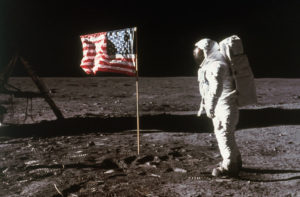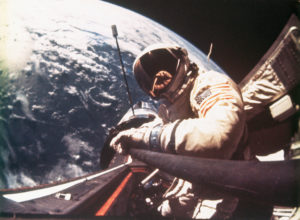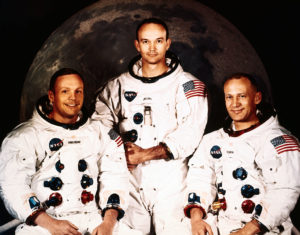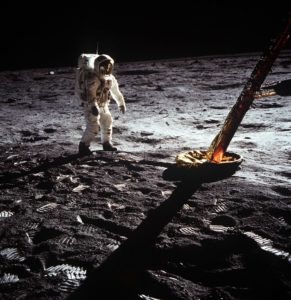-
Space and Astronomy
- Mars: Just the Beginning? – Lesson
- Mars: Just the Beginning? – Quiz
- Six Billion ‘Earth-like’ Planets in the Milky Way Galaxy? – Lesson
- Six Billion ‘Earth-like’ Planets in the Milky Way Galaxy? – Quiz
- Did NASA Scientists Find Another Universe? – Lesson
- Did NASA Scientists Find Another Universe? – Quiz
- A New Planet Was Discovered – And Old Theories Must Change – Lesson
- A New Planet Was Discovered – And Old Theories Must Change – Quiz
- SpaceX Completes First Civilian Trip to Space – Lesson
- SpaceX Completes First Civilian Trip to Space – Quiz
- First Movie Filmed in Space Successful – Lesson
- First Movie Filmed in Space Successful – Quiz
- James Webb Telescope Heads to Deep Space – Lesson
- James Webb Telescope Heads to Deep Space – Quiz
- A Lot Is Happening on and Around the Moon – Lesson
- A Lot Is Happening on and Around the Moon – Quiz
- First-Ever Picture Taken of the Milky Way’s Black Hole – Lesson
- First-Ever Picture Taken of the Milky Way’s Black Hole – Quiz
- First James Webb Telescope Images Revealed – Lesson
- First James Webb Telescope Images Revealed – Quiz
- Buzz Aldrin Sells Jacket from the Moon Landing – Lesson
- Buzz Aldrin Sells Jacket from the Moon Landing – Quiz
- Humans at Home on the Moon – Could It Really Happen in This Decade? – Lesson
- Humans at Home on the Moon – Could It Really Happen in This Decade? – Quiz
- Winter on Mars – Lesson
- Winter on Mars – Quiz
- Pictures of Mars Show Hidden Figures – Lesson
- Pictures of Mars Show Hidden Figures – Quiz
- Jupiter and Venus Appear to ‘Kiss’ – Lesson
- Jupiter and Venus Appear to ‘Kiss’ – Quiz
- The James Webb Telescope Finds Six Ancient Galaxies – Lesson
- The James Webb Telescope Finds Six Ancient Galaxies – Quiz
- Would an EpiPen Work in Space? – Lesson
- Would an EpiPen Work in Space? – Quiz
- Satellite Spots Earth’s Second Moon? – Lesson
- Satellite Spots Earth’s Second Moon? – Quiz
- Space Mining – The Race is On and China is Leading – Lesson
- Space Mining – The Race is On and China is Leading – Quiz
- How Did Gold and Platinum Arrive on Earth – Lesson
- How Did Gold and Platinum Arrive on Earth – Quiz
- Odysseus Has Found Its New Home – Lesson
- Odysseus Has Found Its New Home – Quiz
-
The Environment
- Red Tide: No Fun in the Florida Sun – Lesson
- Red Tide: No Fun in the Florida Sun – Quiz
- Leaded Gas Eradicated from the World, Says United Nations – Lesson
- Leaded Gas Eradicated from the World, Says United Nations – Quiz
- COVID Plastic Waste: A Big Problem for Oceans – Lesson
- COVID Plastic Waste: A Big Problem for Oceans – Quiz
-
Archaeology and Paleontology
- Ancient Human Species Discovered – Lesson
- Ancient Human Species Discovered – Quiz
- Biblical City of Sodom Found in the Jordan Valley? – Lesson
- Biblical City of Sodom Found in the Jordan Valley? – Quiz
- Antarctic Explorer’s Ship Found After a Century – Lesson
- Antarctic Explorer’s Ship Found After a Century – Quiz
- Newly Found Diary Shows How Ancient Egyptians Built the Pyramids – Lesson
- Newly Found Diary Shows How Ancient Egyptians Built the Pyramids – Quiz
- Study Shows ‘Apocalyptic Dust’ Might Have Killed the Dinosaurs – Lesson
- Study Shows ‘Apocalyptic Dust’ Might Have Killed the Dinosaurs – Quiz
- Ancient Celestial Calendar Found in a 2,000-Year-Old Tomb – Lesson
- Ancient Celestial Calendar Found in a 2,000-Year-Old Tomb – Quiz
-
Technology
- 3 Reasons to Protect Your Online Privacy – Lesson – VIDEO
- The Rise of Deepfakes – Lesson
- The Rise of Deepfakes – Quiz
- A New Mayflower Voyage, Captained by AI Technology – Lesson
- A New Mayflower Voyage, Captained by AI Technology – Quiz
- The Latest Supercomputer Is Breaking Speed Barriers – Lesson
- The Latest Supercomputer Is Breaking Speed Barriers – Quiz
- LNGenZ Survey: What is the Greatest American Invention? – Lesson
- LNGenZ Survey: What is the Greatest American Invention? – Quiz
- School and ChatGPT – Is it Cheating? – Lesson
- School and ChatGPT – Is it Cheating? – Quiz
- Artificial Intelligence Gets an Upgrade? – Lesson
- Artificial Intelligence Gets an Upgrade? – Quiz
- Scientists Plan to Bring the Dodo Bird Back from Extinction – Lesson
- Scientists Plan to Bring the Dodo Bird Back from Extinction – Quiz
- Is There Too Much Technology in Education? – Lesson
- Is There Too Much Technology in Education? – Quiz
- AI Coming to a Keyboard Near You – Lesson
- AI Coming to a Keyboard Near You – Quiz
- Is the NSA Browsing Your Browser History? – Lesson
- Is the NSA Browsing Your Browser History? – Quiz
- AI Can’t Compete With People Skills – Lesson
- AI Can’t Compete With People Skills – Quiz
-
Mind and Body
- Teen Scientist’s Invention Mixes Music with Mental Health – Lesson
- Teen Scientist’s Invention Mixes Music with Mental Health – Quiz
- Man Receives First Pig Heart Transplant – Lesson
- Man Receives First Pig Heart Transplant – Quiz
- Sniffing Out the Truth About Smells – Lesson
- Sniffing Out the Truth About Smells – Quiz
- The Power of Playtime – Lesson
- The Power of Playtime – Quiz
- Is Language Getting More Emotional? – Lesson
- Is Language Getting More Emotional? – Quiz
- Scientists Say Household Chores Help Kids’ Brains – Lesson
- Scientists Say Household Chores Help Kids’ Brains – Quiz
- Transplant of Pig Kidney Into a Human Successful So Far – Lesson
- Transplant of Pig Kidney Into a Human Successful So Far – Quiz
- The Lack of a College Degree Is Shortening Lifespans – Lesson
- The Lack of a College Degree Is Shortening Lifespans – Quiz
-
Flora and Fauna
- Dogs Can Tell When Humans Make a Mistake, Says Study – Lesson
- Dogs Can Tell When Humans Make a Mistake, Says Study – Quiz
- Jonathan: The World’s Oldest Living Tortoise – Lesson
- Jonathan: The World’s Oldest Living Tortoise – Quiz
- The Monarch Butterfly Makes a Surprise Return – Lesson
- The Monarch Butterfly Makes a Surprise Return – Quiz
- Bat Falcon Spotted in the United States for the First Time – Lesson
- Bat Falcon Spotted in United States for the First Time – Quiz
- Charles Darwin’s Notebooks Mysteriously Returned after 20 Years – Lesson
- Charles Darwin’s Notebooks Mysteriously Returned after 20 Years – Quiz
- Six Endangered Red Wolf Pups Born in Wildlife Refuge – Lesson
- Six Endangered Red Wolf Pups Born in Wildlife Refuge – Quiz
- Scientists Record Never-Before-Heard Whale Call – Lesson
- Scientists Record Never-Before Heard Whale Call – Quiz
- Underwater Meadow Gets Credit as the World’s Largest Living Plant – Lesson
- Underwater Meadow Gets Credit as the World’s Largest Living Plant – Quiz
- Scientists Trying to Bring the Tasmanian Tiger Back from Extinction – Lesson
- Scientists Trying to Bring the Tasmanian Tiger Back from Extinction – Quiz
- Jurassic Era Insect Found at Arizona Walmart – Lesson
- Jurassic Era Insect Found at Arizona Walmart – Quiz
- The Comeback of the Nearly Extinct Earless Lizard – Lesson
- The Comeback of the Nearly Extinct Earless Lizard – Quiz
- A Strange Golden Orb Found on the Ocean Floor Is Alive! – Lesson
- A Strange Golden Orb Found on the Ocean Floor Is Alive! – Quiz
- Peanut: The Pet Chicken With a World Record – Lesson
- Peanut: The Pet Chicken With a World Record – Quiz
-
Mathematics
- Metric vs. Imperial: A Weighty Debate in Britain – Lesson
- Metric vs. Imperial: A Weighty Debate in Britain – Quiz
- The Abacus is Helping Kids Master Math Skills – Lesson
- The Abacus is Helping Kids Master Math Skills – Quiz
- Retired Engineer Discovers ‘Einstein’ Shape – Lesson
- Retired Engineer Discovers ‘Einstein’ Shape – Quiz
Buzz Aldrin Sells Jacket from the Moon Landing – Lesson

Buzz Aldrin on the moon (Getty Images)
Some of the first items in space still command a high price today.
Neil Armstrong and Edwin “Buzz” Aldrin made history when they became the first and second people to walk on the moon. The two men traveled to the moon in the Apollo 11 spacecraft, along with their fellow astronaut Michael Collins. Even though three people flew on the mission, only two actually landed and walked on the moon’s surface during that trip: Armstrong went first, while Aldrin was second.
These astronauts accomplished a goal set by President John F. Kennedy. Though JFK was not alive when the first moon landing took place, it was a huge feat for scientists and the United States of America. Fast forward 53 years and the items from that incredible day are being sold at auction for large sums of money, highlighting the interest and pride people still hold for that iconic moment in history.
Buzz Aldrin and the Auction

An auction held in late July 2022 broke records by selling a set of Buzz Aldrin’s equipment and attire. The items were used during the 1969 moon landing, as well as the earlier Gemini XII mission which tested whether astronauts could successfully work outside their craft, while in space. The auction took place at Sotheby’s Auction House in New York.
A law passed in 2012 under President Barack Obama gave full ownership of the artifacts from the Gemini, Mercury, and Apollo missions to the astronauts who made those journeys. The law allowed the property owners to do whatever they wanted with the objects. Now 92 years old, Buzz Aldrin felt it was time to sell his items.

Buzz Aldrin on the Gemini 12 mission in space (Getty Images)
“After deep consideration, the time felt right to share these items with the world, which for many are symbols of a historical moment, but for me have always remained personal mementos of a life dedicated to science and exploration,” Aldrin said.
Sixty-eight items that were part of Aldrin’s two missions (Apollo 11 and Gemini XII) went up for sale, including his Presidential Medal of Freedom, which sold for $277,200. In addition, the jacket Aldrin wore during his flight to the moon sold for $2,772,500 (the most valuable American artifact sold at auction). In total, the American icon’s items brought in $8,184,578.
This is not the first auction to sell astronaut memorabilia. Neil Armstrong’s sons made $12 million when they auctioned off their father’s space memorabilia following his death.
The 1969 Moon Landing

Apollo 11 crew: Neil Armstrong (left) Michael Collins (middle) and Buzz Aldrin (right) (Getty Images)
On July 16, 1969, Armstrong, Aldrin, and Collins took flight in Apollo 11 with the destination set for the moon. The world tuned in to see if the three men could accomplish what no one had before.
The ship entered lunar orbit on July 19. The next day, Eagle, the lunar module manned by Armstrong and Aldrin, separated from the main ship and began its descent to the moon’s surface. Upon landing, Armstrong radioed to Mission Control in Houston, Texas, and announced, “The Eagle has landed.”
Moments later, Armstrong stepped foot onto the moon’s surface and was joined 19 minutes later by Aldrin. The two planted an American flag, took pictures, ran scientific tests, spoke with President Richard Nixon on the phone, and left a few items marking their successful journey. Among the objects was a plaque that read: “Here men from the planet Earth first set foot on the moon—July 1969 A.D.—We came in peace for all mankind.” The duo then spent the night in the lunar module before reconnecting with Collins and the main ship. Apollo 11 landed safely in the Pacific Ocean on July 24, 1969, at 12:50 p.m.

(Photo by Heritage Space/Heritage Images via Getty Images)
Additional Moon Landings
In total, 12 Americans have stepped foot on the moon. The others to complete the mission include:
Apollo 12: Charles “Pete” Conrad and Alan Bean
Apollo 14: Alan B. Shepard Jr. and Edgar D. Mitchell
Apollo 15: David R. Scott and James B. Irwin
Apollo 16: John W. Young and Charles M. Duke
Apollo 17: Eugene Cernan and Harrison H. Schmitt
Due to technical problems, Apollo 13 was forced to end its mission early and it never got to finish its moon landing. The astronauts aboard the Apollo 13 ship were commander Jim Lovell, lunar module pilot Fred Haise, and command module pilot Jack Swigert.